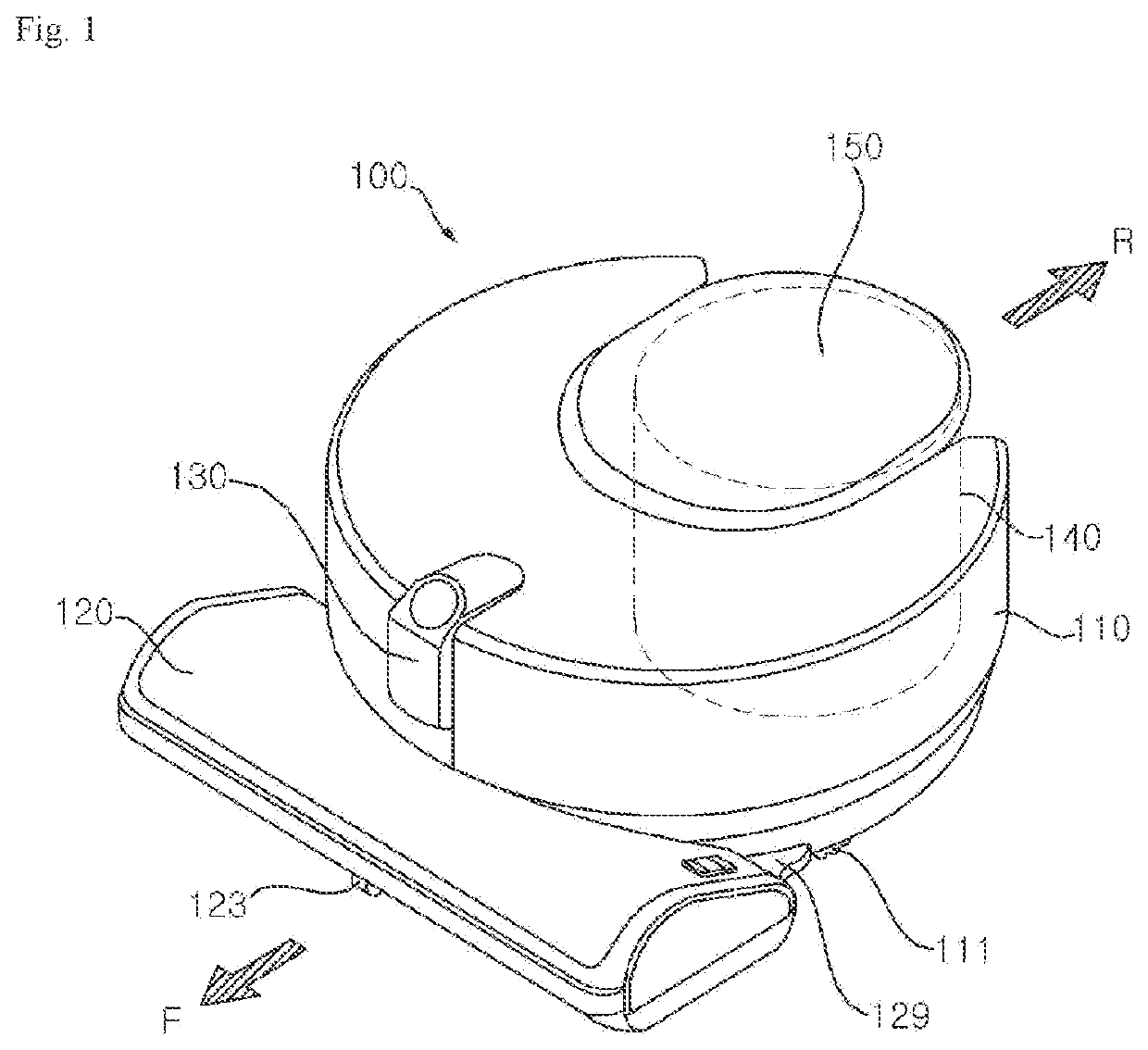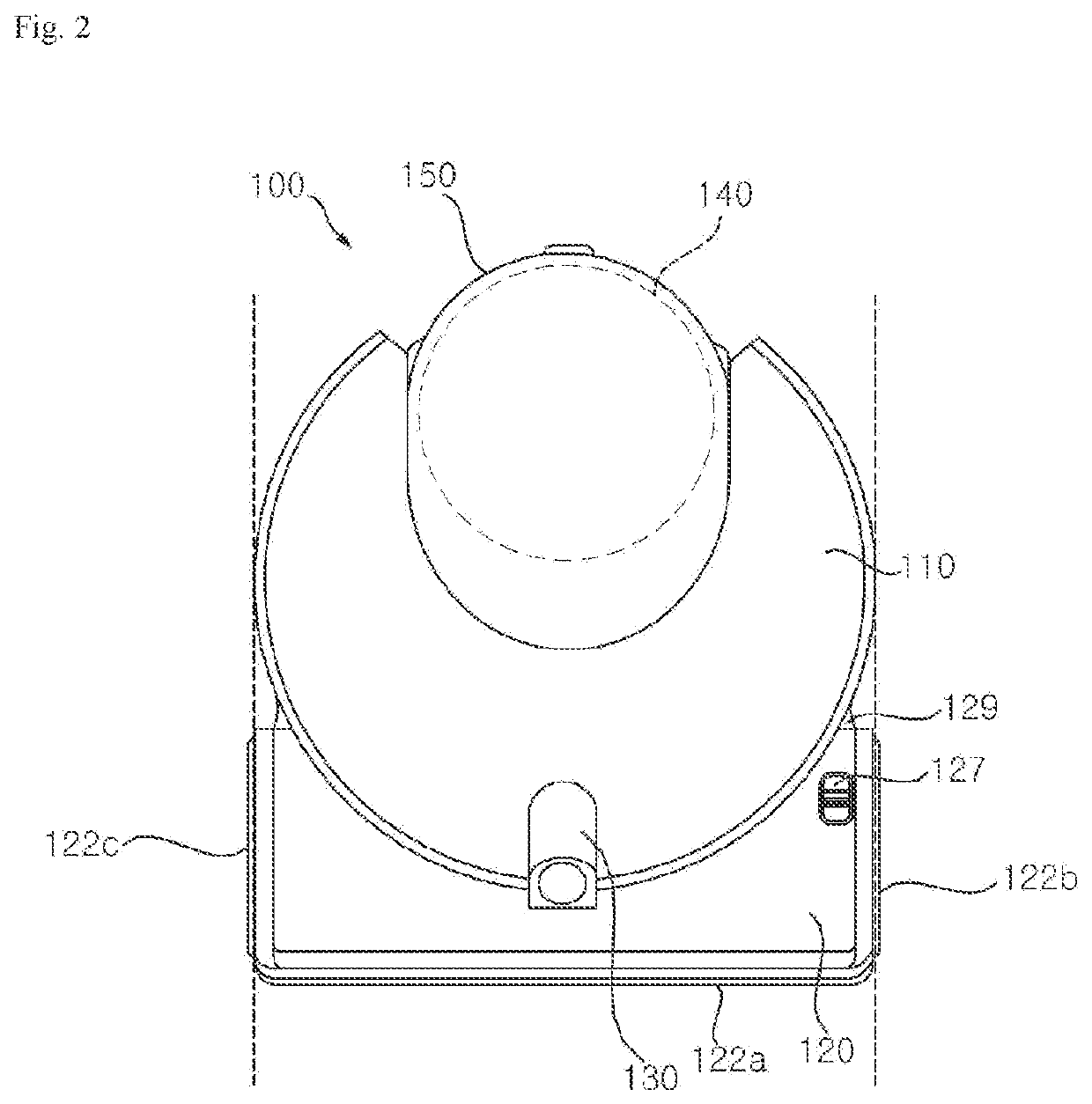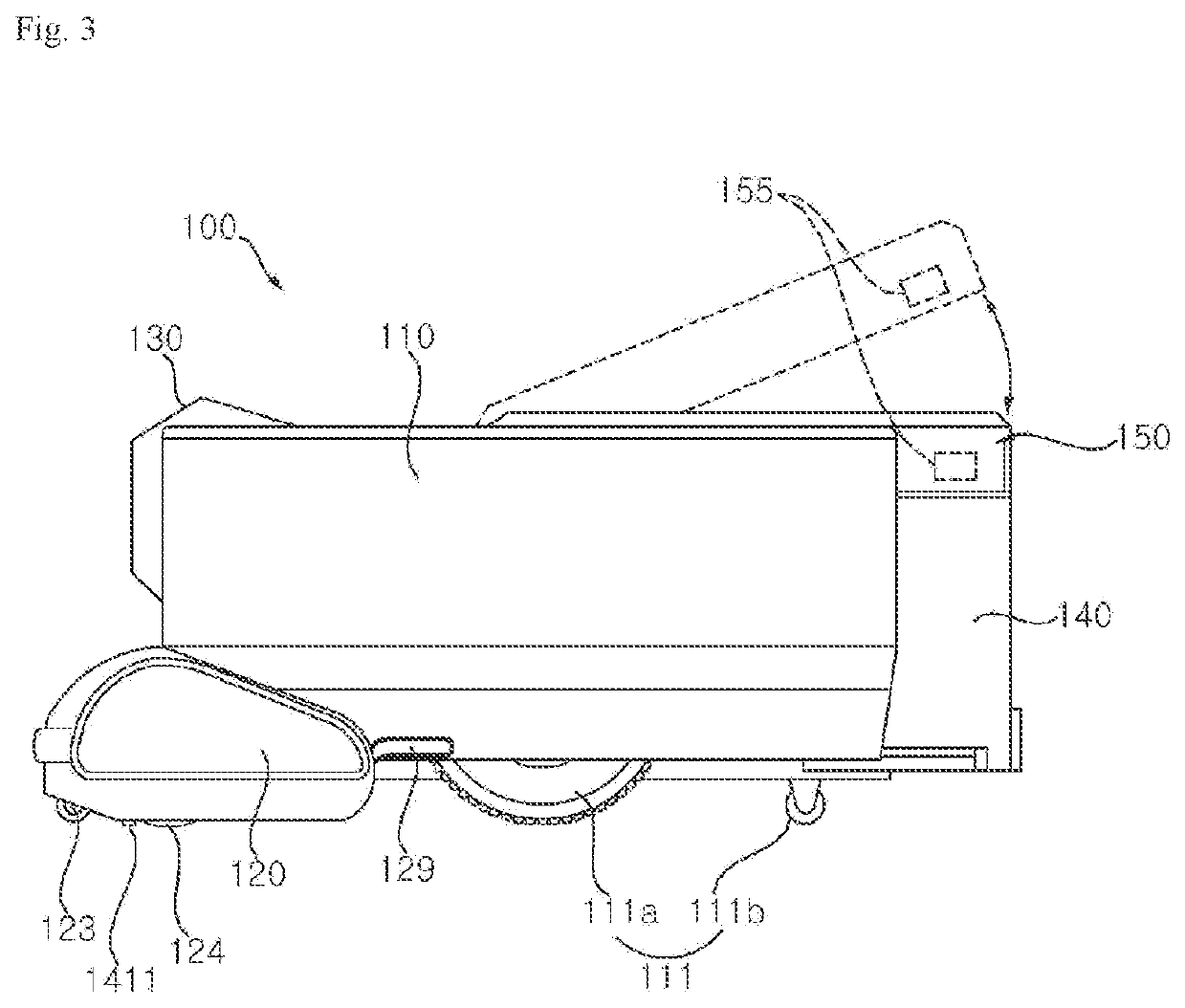Mobile robot and control method of mobile robots
a mobile robot and control method technology, applied in the field of mobile robots, can solve the problems of inability to cooperate cleaning, difficult to grasp relative positions, and each robot does not know the location and environment information of other robots, and achieve the effect of the damage of the filter of the dry cleaner, accurate specification, and reducing the suction rate of the dry cleaner
- Summary
- Abstract
- Description
- Claims
- Application Information
AI Technical Summary
Benefits of technology
Problems solved by technology
Method used
Image
Examples
second embodiment
[0213]For example, the user may select and input an option (a selection term) that a robot cleaner 1 becomes a first mobile robot 100a. In addition, in the step S30, the user may select a second mobile robot 100b among at least one option on a screen of a terminal 300. For example, the user may select and input an option that a robot cleaner 2 (a mop) becomes a second mobile robot 100b. In a second embodiment, which will be described later, a user may select and input only a main robot cleaner among a plurality of collaborative robot cleaners.
[0214]The step S30 may include a mode selection step S30 where any one of a plurality of collaborative modes is selected. The user may select any one of the plurality of options to correspond to a collaborative mode to be selected.
[0215]In the step S90 of cleaning, the plurality of collaborative robot cleaners 100a and 100b selected in the robot cleaner selection step S30 performs cleaning. In the step S90 of cleaning, the plurality of robot cl...
first embodiment
[0234]Referring to FIGS. 9a to 9d, and FIG. 10, a control method of a plurality of robot cleaners according to the present disclosure may include a step S110 in which a first mobile robot 100a specifies a wet contaminated region in a cleaning area B, a step S113 of transmitting an obstacle map including location information of the wet contaminated region and a cleaning command for the wet contaminated region to the second mobile robot 100b w % ben the first mobile robot 100a specifies the wet contaminated region, steps S115 and S120 in which the second mobile robot 100b moves to the wet contaminated region when the second mobile robot 100b receives the cleaning command for the wet contaminated region, and a step S130 in which the second mobile robot 100b cleans the wet contaminated region.
[0235]Referring to FIGS. 9a, 9b, and 10, the step S110 in which the first mobile robot 100a specifies the wet contaminated region in the cleaning area B, the first mobile robot 100a may perform cle...
third embodiment
[0278]FIG. 12 is a flowchart of a control method of a plurality of robot cleaners according to the present disclosure.
[0279]Referring to FIG. 12, in a control method of a robot cleaner according to a third embodiment, as compared with the second embodiment, there is a difference in that, even if a first mobile robot 100a finds a wet contaminated region, the first mobile robot 100a transmits a cleaning command for a wet contaminated region to a second mobile robot 100b after a cleaning completion of the cleaning area B.
[0280]The first mobile robot 100a may specify the wet contaminated region and complete cleaning of the cleaning area B (S201). After the first mobile robot 100a completes the cleaning, the first mobile robot 100a may return to a predetermined position (S202) and transmit an obstacle map and a cleaning command for the wet contaminated region to the second mobile robot 100b (S203).
PUM
 Login to View More
Login to View More Abstract
Description
Claims
Application Information
 Login to View More
Login to View More - R&D
- Intellectual Property
- Life Sciences
- Materials
- Tech Scout
- Unparalleled Data Quality
- Higher Quality Content
- 60% Fewer Hallucinations
Browse by: Latest US Patents, China's latest patents, Technical Efficacy Thesaurus, Application Domain, Technology Topic, Popular Technical Reports.
© 2025 PatSnap. All rights reserved.Legal|Privacy policy|Modern Slavery Act Transparency Statement|Sitemap|About US| Contact US: help@patsnap.com



